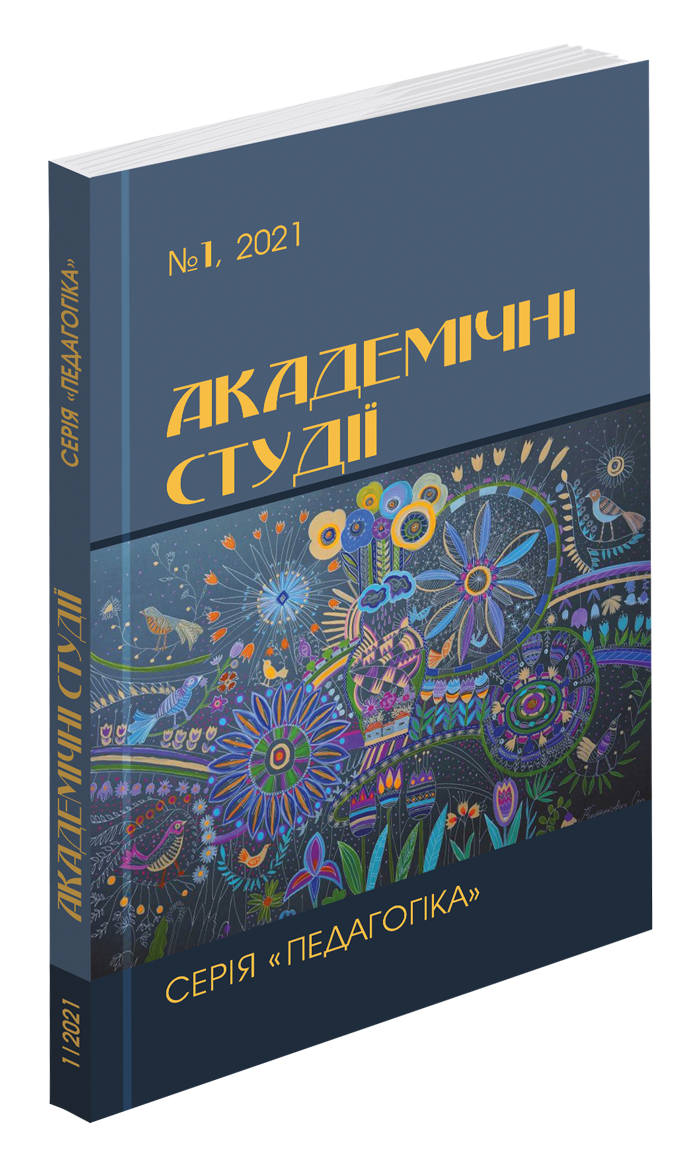Abstract
This article emphasizes that the important element in the primary school educational process, in particular during the second cycle, is the formation and development of self-learning skills, including self-reading activity, which includes the implementation of the effective methods, techniques, technologies and forms of learning by a teacher. It is analyzed the possibilities of the implementing the "flipped learning" technology in primary school, in particular at the lessons of Ukrainian Language and Reading, or Literary Reading lessons. The notion "flipped learning" is interpreted as a form of active learning, the essence of which is to learn new material by students at home, i.e., the acquaintance with the learning material before the next lesson is going independently, and the classroom time is devoted to comprehend and apply knowledge, skills and abilities, in other words for practical tasks. It is determined that the advantages of this form of work are to ensure that each student reaches his level of development through their own pace of work, giving more study time for practical work or to clarify specific misunderstandable issues, to activate cognitive activity of the students who are always interested in working with gadgets, and, as a consequence, it increases their interest to the lessons, the ability to quickly diagnose the educational achievements of the education applicants, etc. It is proposed to start the implementation of the “flipped learning” technology at the lessons of literary reading from a fairy tale, which is the most interesting work for primary school students. The possible tasks for self-work during the study of fairy tales "Cyrilo Kozhumiaka", "About a gray crow and magic glasses", "Legend about a pasqueflower " are described here. It is offered the comparative analysis of traditional learning and “flipped learning” technologies at Reading lessons. It is proved that the advantages of the flipped learning technology at Reading lessons are the formation of self-reading activity; the improving reading skills; enrichment of social and cognitive experience; the development of critical and logical thinking and literature-creative abilities; the formation of readiness for high-quality mastering of academic disciplines in primary and secondary schools, i.e. the competences of lifelong learning.
References
Білоусова, Н.В., Гордієнко, Т.В. Застосування технології перевернутого навчання в роботі загальноосвітнього навчального закладу. Молодий вчений. № 5.2 (69.2). 2019. С. 102–106.
Вашуленко, О.В. Українська мова та читання: підручник для 3 класу закладів загальної середньої освіти (у 2 частинах). Ч. 2. Київ : Видавничий дім «Освіта», 2020. 160 с.
Бібік, Н.М. Нова українська школа: порадник для вчителя. Київ : Літера ЛТД, 2018. 160 с.
Пилипенко О.О. Перевернуте навчання як одна з ключових тенденцій освітніх технологій сучасності. URL: https://vseosvita.ua/library/perevernute-navcanna-ak-odna-z-klucovih-tendencij-osvitnih-tehnologijsucasnosti-46162.html (дата звернення: 19.03.2021).
Приходькіна Н. Використання технології «переверненого навчання» у професійній діяльності викладачів вищої школи. Науковий вісник Ужгородського національного університету. Серія: Педагогіка. Соціальна робота. 2014. Вип. 30. С. 141–144.
Савченко О.Я. Дидактика початкової освіти. Київ : Грамота, 2012. 504 с.
Слушний О.М. Технологія «перевернутого» навчання як інноваційний засіб підвищення якості освіти. Наукові записки Вінницького державного педагогічного університету імені Михайла Коцюбинського. Серія: педагогіка і психологія. 2016. Вип. 48. С. 19–23.
Савченко О.Я. Типова освітня програма 3-4 клас. URL: https://mon.gov.ua/storage/app/media/zagalna%20serednya/programy-1-4klas/2020 / (дата звернення: 18.03.2021).
Шевчук Л.М. Самостійна робота над текстом у навчальних посібниках для 3 класу. URL: http://ipvid.org.ua/upload/iblock/84f/84fefb 3f0edf47d3808e1c513cbd3f3a.pdf (дата звернення: 22.03.2021).
Carhill-Poza, A. (2019). Defining flipped learning for English learners in an urban secondary school. Bilingual Research Journal. 42:1. 90–104. URL: https://www.researchgate.net/publication/330911766_Defining_flipped_learning_for_English_learners_in_an_urban_secondary_school (Last accessed: 14.03.2021).
Cheng, Sh.-Ch., Hwang, G.-J., Lai, Ch.-L. (2020). Critical research advancements of flipped learning: a review of the top 100 highly cited papers. Interactive Learning Environments 0:0. 1–17. URL: https://www.tandfonline. com/doi/abs/10.1080/10494820.2020.1765395 (Last accessed: 16.03.2021).
Enfield, J. (2013). Looking at the impact of the flipped classroom model of instruction on undergraduate multimedia students at CSUN. Techtrends. 57(6). 14–27. URL: https://link.springer.com/article/10.1007/s11528-013-0698-1 (Last accessed: 14.03.2021).
Flumerfelt, S., Green, G. (2013). Using lean in the flipped classroom for at risk students. Educational Technology & Society. 16(1). 356–366. URL: https://www.jstor.org/stable/jeductechsoci.16.1.356?seq=1 (Last accessed: 14.03.2021).
Zou, D., Luo, S., Xie, H., Hwang, G.-J. (2020). A systematic review of research on flipped language classrooms: theoretical foundations, learning activities, tools, research topics and findings. Computer Assisted Language Learning. 0:0. 1–27. URL: https://www.tandfonline.com/ doi/abs/10.1080/09588221.2020.1839502 (Last accessed: 16.03.2021).
